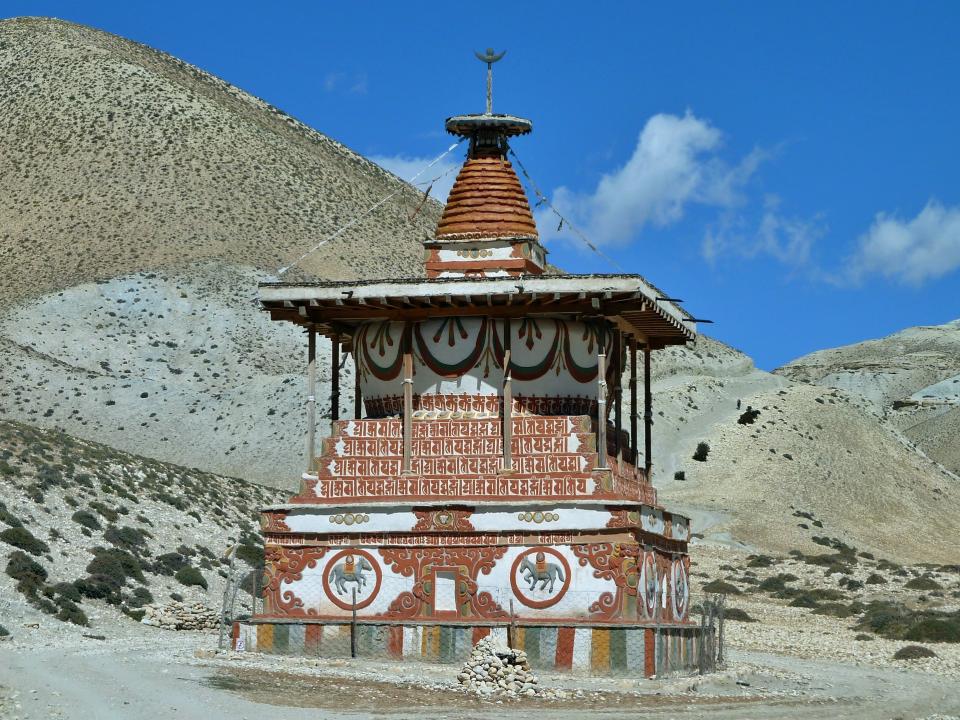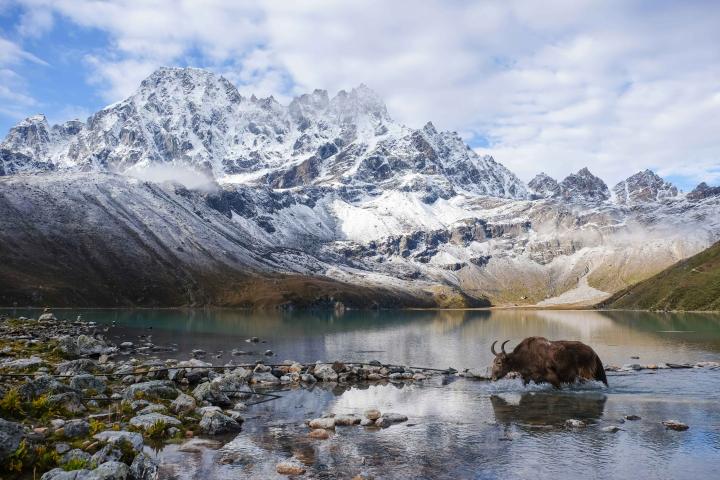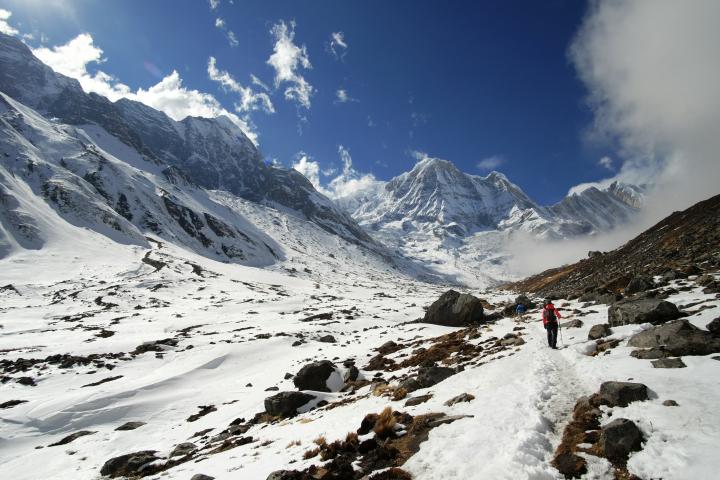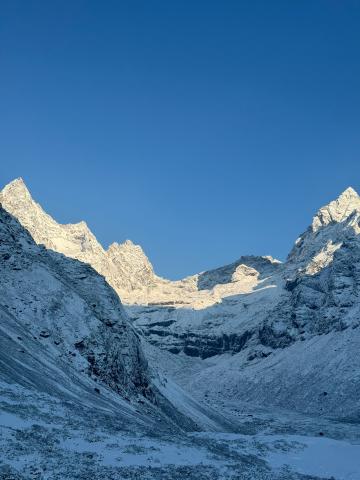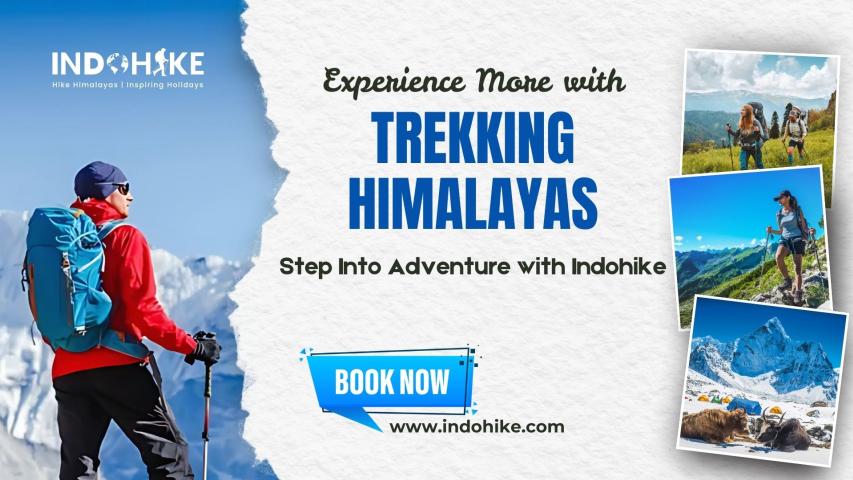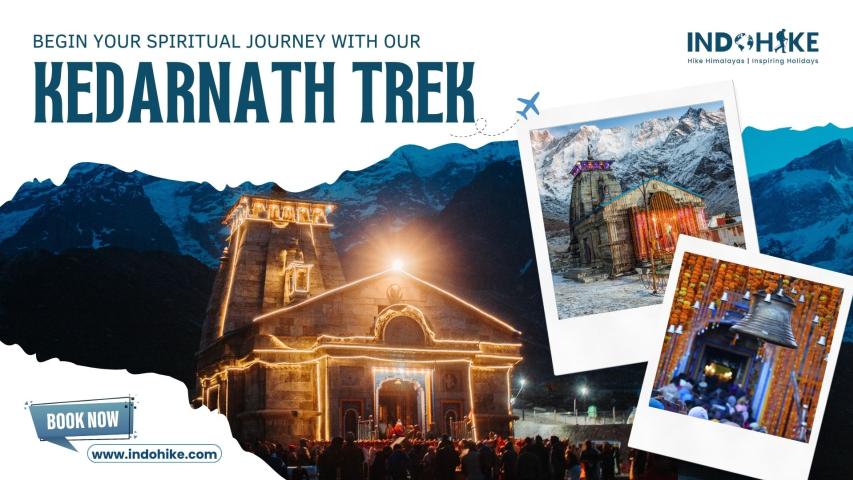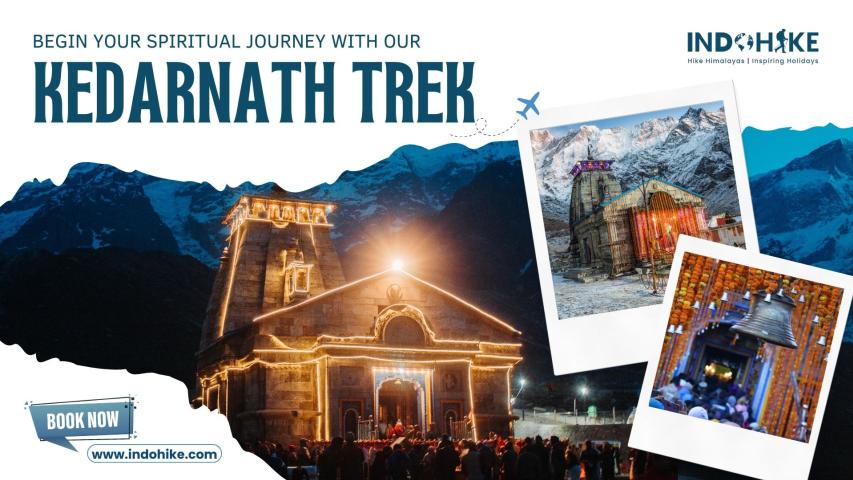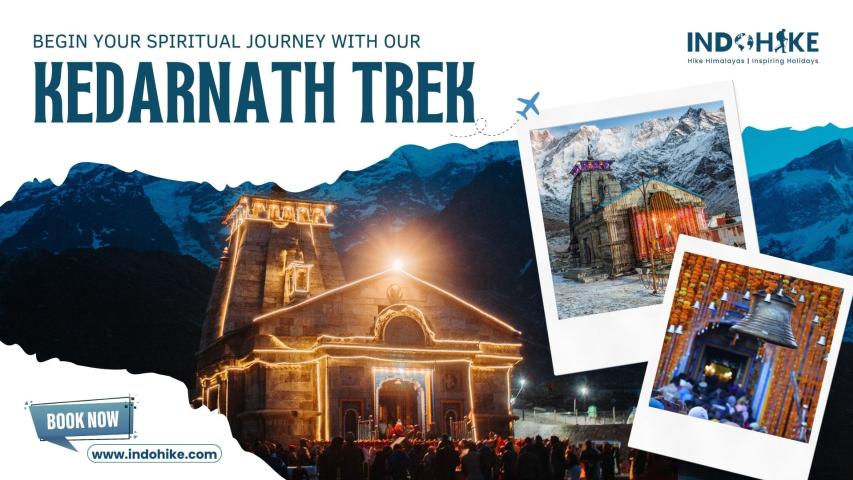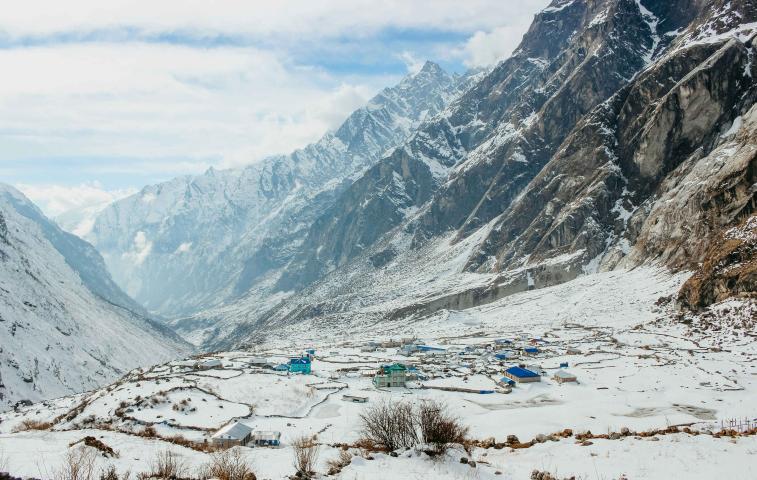A Trail Through Tibetan Echoes and Desert Landscapes
The Upper Mustang Trek takes you into a world unlike any other in Nepal. Known as the “Last Forbidden Kingdom,” Mustang was off-limits to foreigners until 1992 and still requires a special permit. The landscape here is stark and dramatic—wind-sculpted cliffs, red-walled caves, and vast Himalayan deserts stretch toward the sky. It’s not just a trek but an immersion into a unique blend of Tibetan culture, untouched traditions, and remote Himalayan life.
Lo Manthang: The Walled City of Mustang
One of the main highlights of this trek is Lo Manthang, the ancient capital of the former Kingdom of Mustang. The town is surrounded by high walls and filled with monasteries, narrow alleys, and whitewashed houses. Time seems to slow here. Monks chant in centuries-old gompas, and locals still wear traditional clothing as they walk their fields by hand. Exploring Lo Manthang feels like stepping back into a medieval Himalayan era.
Cultural Encounters Along the Trail
Upper Mustang is deeply rooted in Tibetan Buddhism, and the influence is visible in every village, prayer wall, and monastery. From Chhusang to Tsarang, trekkers encounter rich cultural elements like sky caves believed to house ancient Buddhist scripts, festivals like Tiji, and local customs that reflect Mustang’s unique identity. The trek provides a rare chance to see traditions that are rapidly disappearing in other parts of the Himalayas.
A Landscape Unlike Anywhere Else in Nepal
Unlike the lush greenery of the Annapurna region, Upper Mustang lies in the rain shadow of the Himalayas, resulting in a barren but stunning landscape. Eroded cliffs, sandy canyons, and dry riverbeds make the scenery feel more like Tibet than Nepal. The views of Nilgiri, Dhaulagiri, and Annapurna peaks in the distance create a surreal contrast with the desert terrain.
Trek Details and Logistics
The trek typically starts from Jomsom after a flight from Pokhara and follows the Kali Gandaki River northward. Most itineraries last 10 to 14 days, with overnight stops in teahouses in small villages. While the terrain isn’t overly steep, the dry climate and wind make the journey demanding. A Restricted Area Permit and Annapurna Conservation Area Permit are mandatory to enter Upper Mustang.
When to Go
The best time to trek in Upper Mustang is from May to early October. Since it lies in a rain-shadow area, even the monsoon months are suitable, unlike other regions of Nepal. The Tiji Festival, usually held in May, is an excellent time to visit for a cultural deep dive.
Final Thoughts
The Upper Mustang Trek is a rare combination of rugged adventure, timeless culture, and Himalayan silence. It’s ideal for those who want to go beyond crowded trails and connect with one of the last truly preserved corners of the Tibetan world. Every step in Mustang feels like a journey through time—one that leaves a lasting mark long after the trail ends.
